If you notice a small tear in the thin and delicate tissue that lines the anus, it is probably an anal fissure. An anal fissure may occur when you pass hard stools during a bowel movement and put a lot of strain1. They can cause pain and bleed with daily bowel movements.
Fissures are common among people of all ages, but can affect people of any age, especially between 20 to 40 years2. Most anal fissures get better with simple treatments, such as increased fibre intake or sitz baths. Some people with anal fissures may need medication or surgery. If you are experiencing symptoms of anal fissure, consult with a doctor immediately and get it diagnosed properly. This will help you understand the severity of your condition. This article will guide you on the types of food you should eat to deal with fissures more effectively.
Fissures are a rather painful condition that causes discomfort when you are sitting or even standing. Several food items can help lessen the symptoms of fissure effectively:
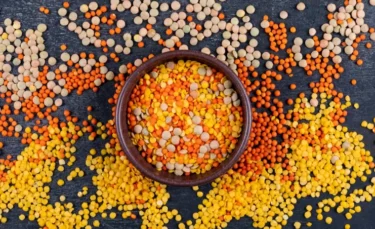
Lentils and legumes like beans and chickpeas are loaded with dietary fibre. According to the Academy of Nutrition and Dietetics, adult males and females should consume at least 38 grams and 25 grams of fibre per day, respectively3. Eating the right amount of fibre helps stools from being too hard and causing constipation. It also keeps stools from being too liquid and causing diarrhoea. A soft, easily passed stool will be less hard on the fissure and keep it from getting even more irritated.
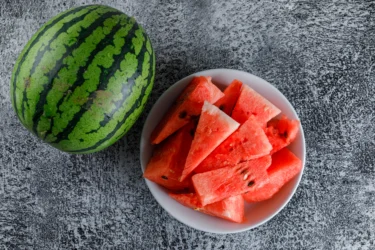
Dehydration or not having enough water in your body can contribute to constipation. Watermelon is very healthy and one of the most hydrating foods you can eat. A cup (150 gram) of watermelon contains over a half-cup (120 ml) of water, in addition to some fibre and several important nutrients, including vitamin A, magnesium and vitamin C.
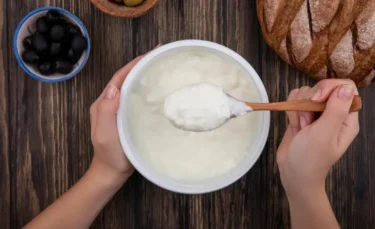
Curd is promoted in Ayurvedic medicine, which can help by targeting the digestive tract and helping promote normal and pain-free bowel movements4. You may also consume buttermilk.
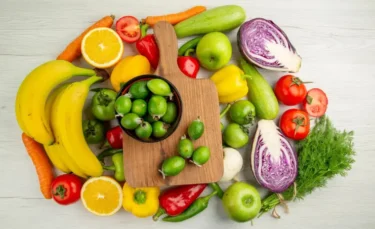
Fruits like lemons and oranges are loaded with vitamin C. Citrus fruits are an important source of antioxidants. They help in lowering the chances of flare-ups and inflammation that comes with anal fissure. Include a variety of fruits and seasonal vegetables in your daily diet.
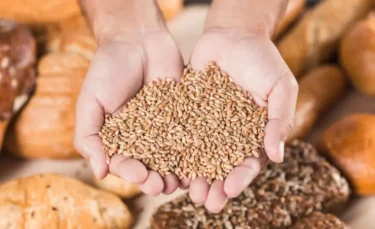
Whole grains are similar to legumes, as they retain their germ, bran and endosperm, all of which are loaded with fibre content. Whole grains are rich in insoluble fibre. Insoluble fibre cannot be digested by the body. They simply add volume to the stool and help us excrete with ease5, with less pain and discomfort that comes with fissures. Brown rice, quinoa, oats and barley are some examples of whole grains.
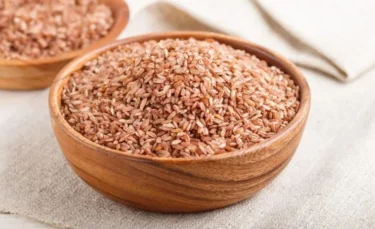
Owing to its unpolished outer layer, brown rice is rich in dietary fibre and has a positive effect on lowering the chances of constipation6. It can effectively target constipation by helping improve bowel movements and decreasing fissure occurrences in future.
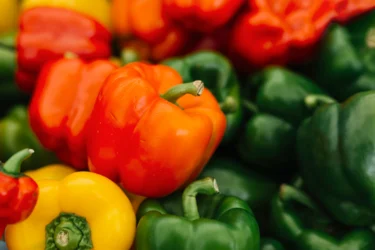
Similar to celery in terms of water and fibre content, bell pepper is a great addition to your diet when you have symptoms of anal fissure. It softens stool and lessens the need to strain while excreting. Raw bell peppers can be sliced and added to salads. It can also be eaten by dipping in guacamole or hummus.
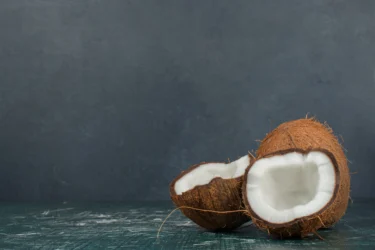
Coconuts are high in fibre, which helps bulk up your stool and helps support bowel regularity7, keeping your digestive system healthy.
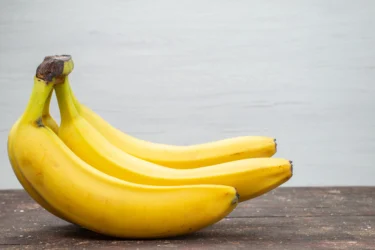
Loaded with pectin and resistant starch, a single banana provides an average of 3 grams of fibre. The combination of pectin and resistant starch helps in clearing stool easily and thus is a great addition to your diet when suffering from anal fissures.
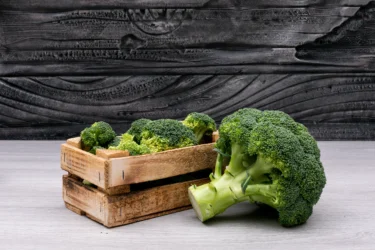
Vegetables like broccoli and carrots, for example, are loaded with fibre content8. Some people prefer broccoli florets, but you can eat the leaves and stems, too. The stalk contains the most fibre, while broccoli leaves are highest in cell-protecting antioxidants, vitamins E and K, and calcium
Also Read: 8 Best Home Remedies For Piles
All food items that trigger problems like indigestion, bloating, constipation or diarrhoea must be avoided. A particular food may suit one person but not the other. Understand your triggers and exclude the food that may cause digestive problems. Here are some foods to avoid-
Also Read: Best Foods To Eat And Avoid With Kidney Stones
Khichdi, vegetable dalia, vegetable oats preparations, upama, idli, dhokla and other steamed and grilled preparations of healthy vegetables with low oil and fewer spices are good for the digestive system if you are suffering from anal fissure. Following are some different recipes to try–
Thus, proper care and good food cooked at home may lower the risk factors like constipation making your recovery from anal fissure easier. When talking about the best food choices, no one’s advice suits all. It is best to follow your doctor’s advice and include the food items that suit you based on your overall health needs. Depending on the severity of your condition, along with doctor-prescribed medications and a good diet, you should be able to recover well.
Also Read: Typhoid – What to Eat and What to Avoid?
Apples are rich in soluble fibre. Apple adds bulk to your stool and helps in passing softer stools, thus, it is a good food item to include in your diet unless advised otherwise by your doctor.
Regular exercise increases blood flow throughout your body, which may aid in lessening anal fissures. Exercise also promotes regular bowel movements, which may help as well. Avoid exercises that may strain the anal region.
Eggs improve the movement of the intestines and help make the stool soft. Eating an egg daily can be a good option if eggs suit you. You can consume eggs in moderation when suffering from anal fissure.
Disclaimer: The information provided here is for educational/awareness purposes only and is not intended to be a substitute for medical treatment by a healthcare professional and should not be relied upon to diagnose or treat any medical condition. The reader should consult a registered medical practitioner to determine the appropriateness of the information and before consuming any medication. PharmEasy does not provide any guarantee or warranty (express or implied) regarding the accuracy, adequacy, completeness, legality, reliability or usefulness of the information; and disclaims any liability arising thereof.
Legume seeds are referred to as ‘poor man’s meat’ and rightly so. They are an excellent source of proteins, bioactive compounds, minerals and vitamins. The mung bean (Vigna radiata), commonly referred to as Moong dal in India, is one of the most important edible legume crops. It is cultivated and consumed mainly in Asian countries like China, Bangladesh, Pakistan, India and some Southeast Asian countries. It is also grown in the dry regions of Europe and warmer parts of Canada and the United States1. It contains a balanced amount of nutrients, and its combination with cereals has been recommended to increase the quality of protein1. In the Chinese book Ben Cao Qui Zen, it is stated to be beneficial for digestive upset and skin moisturisation2.
Moong dal is rich in high-quality proteins with high digestibility and is an excellent source of carbohydrates, vitamins, minerals, fibre, and essential fatty acids. Below are the nutrient value of moong dal in percentage content:
The presence of bioactive compounds, macro and micronutrients may be responsible for the potential properties that Moong dal might exhibit, some of which are listed below:
I would suggest moong dal if you’re looking for an affordable and vegetarian-friendly source of protein. Not only is it cost-effective, but it’s also packed with protein goodness. What’s even better is its protein quality might be easy on your tummy, making it easy to digest compared to other legumes6.
Dr. Rajeev Singh, BAMS

Moong dal being nutrient-rich, might show effects against various microorganisms, including bacteria, fungi and viruses.Various studies have shown that Moong dal might have a potential effect against many species of bacteria and this property of it is comparable to Erythromycin, a commonly used antibiotic4. It has also shown activity against Helicobacter pylori, a bacteria causing stomach infections2.
Its possible effectiveness against fungal infections is comparable to that of Fluconazole, a drug which is commonly used to treat a fungal infection called candidiasis4. One of the researches also showed that Mung Bean Sprouts from Moong dal might be helpful as an antiviral and prophylactic agent against Respiratory Syncytial virus and Herpes Simplex virus infections4. However, more studies are required and a doctor should be consulted for infections.
I recently came across a study on the antioxidant properties of moong dal soup. According to studies, it might actually help in heat stress injuries! How cool is that? Animal studies show that it may protect from oxidative stress, which is linked to various diseases. However, it’s important to note that more human studies are needed to confirm these exciting claims5.
Dr. Siddharth Gupta, B.A.M.S, M.D (Ayu)
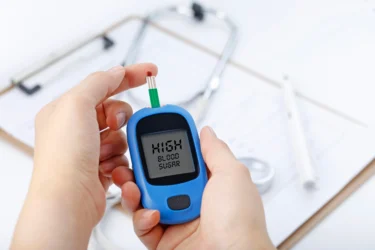
Moong dal might help to lower blood glucose levels by apparently decreasing the absorption of glucose from the small intestines. A study showed that green gram flour, i.e. Moong dal flour might help in the control of blood sugar levels. Another study4 was conducted by Lou et al. in 2016, which clearly explained that the presence of certain phenolic compounds might be what helps moong dal lower blood sugar levels. There is a requirement for more studies in this area. Therefore, you should consult a doctor for the diagnosis and treatment of diabetes as it is a serious condition.

Studies have revealed that moong dal might inhibit the action of an enzyme which is responsible for increase of the blood pressure, thus, potentially helping lower blood pressure4. Researchers have found that high amounts of raw sprout extracts, dried sprout extracts, and enzyme digested sprout extracts might help in the lowering of blood pressure2. It was also found that dried sprout powder might not be as effective as sprout extracts2. However, more studies are required. You should consult a doctor for serious conditions like high blood pressure (known as hypertension), which should be diagnosed and treated by a doctor.
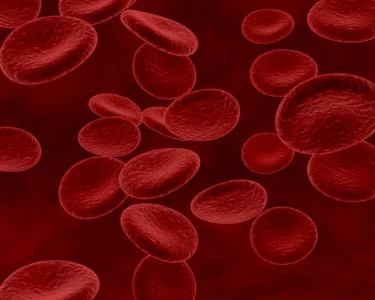
Moong dal might help in lowering the level of lipids and cholesterol in the body4. It might also help in the production of enzymes that might regulate the cholesterol levels of the blood4. This cholesterol-lowering effect of moong dal might be similar to Vitamin E4. However, more studies are required to prove such claims. Moreover, a doctor should be consulted for the diagnosis and treatment of high cholesterol.

Researchers have found that the active components present in moong dal might have a potential to help with various cancer types like breast cancer, digestive system cancers and leukaemia (blood cancer)1. A protein called Vicilin, which is isolated from moong dal, might have a potential to stop the cells responsible for breast cancer from growing. Also, it was seen in a study that fermented moong dal might help to stop tumour development and might help enhance the production of compounds that might help with cancer, thus, it might have anti-cancer properties4. However, more studies are required to prove the above-stated claims. Cancer is a serious condition and must be diagnosed and treated only by a doctor. Kindly ensure that you consult a doctor.

Moong dal might act as a prebiotic (food that helps in the growth of good bacteria in the small intestine) and thus might help to maintain a healthy digestive system4. The presence of indigestible food ingredients like dietary fibre and oligosaccharides (type of carbohydrates) might impart prebiotic properties to it and may be helpful for the gut health, constipation, development of cholesterol and obesity, and might reduce the chances of heart diseases4. However, such claims need more research ass proof.
A probiotic yoghurt was developed by supplementing yoghurt with green gram (moong dal), oats, barley and quinoa, using a good bacteria (Lactobacillus rhamnosus GR-1) in a study4. Researchers have found that fermentation of moong dal with Lactobacillus strain might help improve the protein content and digestibility of the protein4. However, more studies are required to prove these potential uses of moong dal. Therefore, you should consult a doctor before using moong dal for human health.
Let me tell you a fun fact. Did you know that moong dal not only provides nutrition but also has a long history of use as traditional Chinese medicine? According to the famous Chinese pharmacopoeia called the ‘Bencao Gangmu,’ they have been recognised for their detoxifying properties, potential ability to boost mental well-being, and even their power to help with heat stroke and digestive issues7.
Dr. Smita Barode, B.A.M.S, M.S.

It might have a potential as a skin lightening agent and may interfere with the formation of a pigment called melanin which imparts a darker tinge to the skin4. It might also have a moisturising effect on the skin and has been used traditionally as a home remedy for obtaining glowing skin2. However, you should not use it without consulting a doctor. There is more research required to ascertain the potential uses of moong dal for skin.
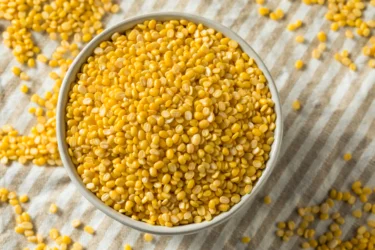
Moong dal might help effect the unwanted enlargement of fat cells in the liver and may not allow the accumulation of fat in it, thus it might help with fatty liver (hepatic steatosis)4. Moong dal might also have an effect on the immune system of the body and might help reduce an unnecessary activation of it. This activity might be helpful for many diseases related to the immune system and also might also reduce inflammation1.
The potential antioxidant activity of moong dal might be seen to be prominent in its seeds, sprouts and hulls. It might act as a scavenger for free radicals (unstable molecules in the body), which are harmful to the cells of the body and it may neutralise them4. It may be a good dietary supplement and be helpful for the diseases caused by the accumulation of free radicals like cancer, diabetes, heart diseases, etc.)4. Among the different varieties, the highest antioxidant activity might be shown by the Pattu variety of green gram, which has high phenolic content4. However, more research is required for proving such claims.
Though there are studies that show the potential use of moong dal in various conditions, but these are insufficient and there is a need of further studies to establish the true extent of benefits of moong dal on human health.
Also Read: Masoor Dal- Uses, Benefits & Nutritional Value
Moong dal can be incorporated into our diet and consumed in various forms like:
Studies have also revealed that soaking moong dal before use might increase the availability of its nutrients and might facilitate nutrition utilisation by the body. So soaking the dal before you start cooking might be good for your health too4. However, more research is required for to prove the use of moong dal for human health.
You must consult a qualified doctor before taking any herbal supplements. Do not discontinue or replace an ongoing treatment of modern medicine with an ayurvedic/herbal preparation without consulting a qualified doctor.
Moong dal might have unknown side effects. There is a requirement for more studies on the side effects of moon dal. Kindly do not use it to self-medicate, alter, replace or discontinue any ongoing treatment. Please consult a doctor.
It is advised to consult an Ayurvedic physician regarding specific usage of Moong dal for medicinal purposes. General precautions should be taken before using moong dal, especially by pregnant and nursing women, elderly individuals and children. Kindly do not self-medicate.
Also Read: 16 Simple Home Remedies for Glowing Skin!
Moong dal might interact with other drugs. However, more research is required for studying the adverse drug reactions of moong dal. Please do not self-medicate and ensure that you consult a doctor. One should always disclose all the current medications being used to the doctor so that they can assess the situation and further give sound medical advice.
Moong dal can be consumed as a vegetable, soaked and sprouted, used in salads, boiled, fried, used as a paste etc4.
Moong dal might help to reduce blood pressure by potentially inhibiting the action of an enzyme which might cause high blood pressure4. However, more research is required to prove the possible effects of moong dl on blood pressure. Kindly consult a doctor as serious conditions such as high blood pressure should be diagnosed and treated by a doctor.
Moong dal might have potential use for moisturising the skin2. However, more research is required. Please consult a doctor before applying anything on your skin.
There is no evidence stating the benefits of Moong dal for hair.
Moong dal might act as a probiotic and might be helpful for gut health, constipation and might help the growth of good bacteria4. However, there is a need for more research. Kindly do not self-medicate, always consult a doctor.
1. Hou D, Yousaf L, Xue Y, Hu J, Wu J, Hu X, et al. Mung bean (Vigna radiata L.): Bioactive polyphenols, polysaccharides, peptides, and health benefits. Nutrients. 2019;11(6):1–28. Available from: https://www.ncbi.nlm.nih.gov/pmc/articles/PMC6627095/
2. Tang D, Dong Y, Ren H, Li L, He C. A review of phytochemistry, metabolite changes, and medicinal uses of the common food mung bean and its sprouts (Vigna radiata). Chem Cent J. 2014;8(1):1–9. Available from: https://www.ncbi.nlm.nih.gov/pmc/articles/PMC3899625/
3. Central F. [ HISTORICAL RECORD ]: MOONG DAL , SPLIT MOONG. 2019;9(c):12–5. Available from: https://fdc.nal.usda.gov/fdc-app.html#/food-details/445233/nutrients
4. Mekkara nikarthil Sudhakaran S, Bukkan DS. A review on nutritional composition, antinutritional components and health benefits of green gram (Vigna radiata (L.) Wilczek). J Food Biochem. 2021;45(6):1–19. Available from: https://onlinelibrary.wiley.com/doi/abs/10.1111/jfbc.13743
5. Cao D, Li H, Yi J, Zhang J, Che H, Cao J, Yang L, Zhu C, Jiang W. Antioxidant properties of the mung bean flavonoids on alleviating heat stress. PLoS One. 2011;6(6):e21071. doi: 10.1371/journal.pone.0021071. Epub 2011 Jun 10. PMID: 21695166; PMCID: PMC3112222. Available from: https://pubmed.ncbi.nlm.nih.gov/21695166/
6. Hou D, Yousaf L, Xue Y, Hu J, Wu J, Hu X, Feng N, Shen Q. Mung Bean (Vigna radiata L.): Bioactive Polyphenols, Polysaccharides, Peptides, and Health Benefits. Nutrients. 2019 May 31;11(6):1238. doi: 10.3390/nu11061238. PMID: 31159173; PMCID: PMC6627095. Available from: https://pmc.ncbi.nlm.nih.gov/articles/PMC6627095/
7. Hou D, Yousaf L, Xue Y, Hu J, Wu J, Hu X, Feng N, Shen Q. Mung Bean (Vigna radiata L.): Bioactive Polyphenols, Polysaccharides, Peptides, and Health Benefits. Nutrients. 2019 May 31;11(6):1238. doi: 10.3390/nu11061238. PMID: 31159173; PMCID: PMC6627095. Available from: https://pmc.ncbi.nlm.nih.gov/articles/PMC6627095/
Disclaimer: The information provided here is for educational/awareness purposes only and is not intended to be a substitute for medical treatment by a healthcare professional and should not be relied upon to diagnose or treat any medical condition. The reader should consult a registered medical practitioner to determine the appropriateness of the information and before consuming any medication. PharmEasy does not provide any guarantee or warranty (express or implied) regarding the accuracy, adequacy, completeness, legality, reliability or usefulness of the information; and disclaims any liability arising thereof.
Links and product recommendations in the information provided here are advertisements of third-party products available on the website. PharmEasy does not make any representation on the accuracy or suitability of such products/services. Advertisements do not influence the editorial decisions or content. The information in this blog is subject to change without notice. The authors and administrators reserve the right to modify, add, or remove content without notification. It is your responsibility to review this disclaimer regularly for any changes.
As the mercury levels start rising and drinking gazillion litres of water is not making a difference, a good way to keep your body cool is by consuming the right diet. This can help reduce internal heat and make you feel more comfortable with the soaring temperatures. While cold drinks and frozen desserts might seem appealing options, they are not. They are usually full or sugar and can instead, affect you adversely. So, knowing what to eat in summers will not just help you beat the heat but also keep you healthy. Here is our list of foods that will cool you down this summer:
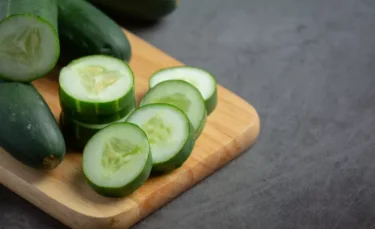
‘Cool as a cucumber’- heard that one, right? Cucumbers instantly hydrate the body and bring down the body heat. You can snack on them as a salad or with your favourite dip or mix them into a juice with ginger and some lemon. Due to their high water content, they aid in providing hydration by replenishing lost fluids and refresh the body1.
In my opinion, cucumber juice can work wonders for your skin. It’s not just refreshing to drink, but it might also have nourishing properties when applied topically. Cucumber juice may have a soothing effect on the skin, helping to calm down irritation and reduce swelling. And if you’ve spent too much time in the sun, cucumber may even help ease the pain of sunburn4.
Dr. Siddharth Gupta, B.A.M.S, M.D (Ayu)
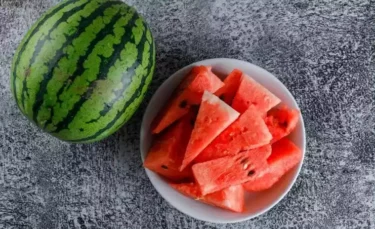
Watermelons sell like hot cakes in the summer. Juicy and full of nutrients that the body needs, the melons make for great summer companions. Not only do they hydrate but boost the body with power-packed nutrients like Vitamin A, Vitamin C, magnesium, potassium and fiber2.
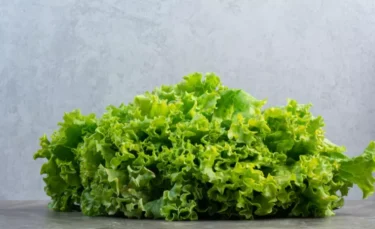
Green leafy vegetables are high in nutrient value, calcium and provide a good cooling effect on the body. Spinach, lettuce, Amaranth, Chinese cabbage and kale are your summer talismans or the safest go-to vegetables. They can be had in smoothies, salads or as a side dish in a meal.
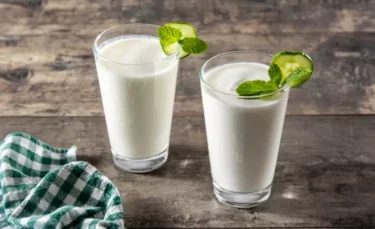
The Indian drink of the summer is buttermilk and the wisdom of the ages shines through. Not only does it keep you hydrated but it also is beneficial for digestion3. Have it with roasted cumin seeds, fresh coriander and some ginger to add zing to your day.
From experience, let me tell you about the magic of buttermilk! It’s like a magical potion that can work wonders for slowing down the ageing process. By nourishing our bodies with its rich nutrients, buttermilk may keep our arteries flexible and might also help combat age-related symptoms such as memory decline, vision problems, wrinkles, and greying hair. Cheers to a youthful and vibrant life with the goodness of buttermilk13!
Dr. Rajeev Singh, BAMS
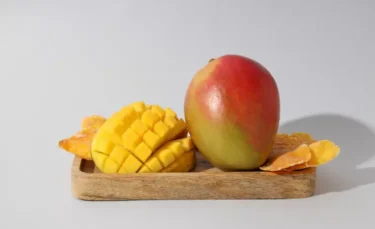
The king of fruits is your best alternative to reducing body heat. There are several ways of incorporating it into your diet. Have it raw, as aam Panna- that quintessential summer drink, as chutney or curry. Mangoes are great for digestion, and can help deal with heat strokes.
From what I’ve seen, mango is much more than just a delicious fruit. It contains bioactive components that may have anticancer activity in various types of tumour cells10.
Dr. Smita Barode, B.A.M.S, M.S.
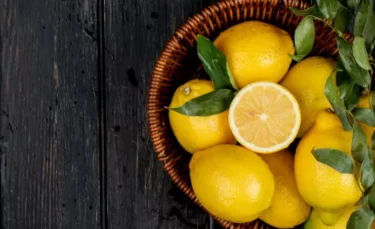
The easiest way to add flavour to your glass of water is to have it with lemon5. They not just hydrate your body but also add a healthy dose of Vitamin C to your diet, boosting your immune system and helping improve your skin health too! So, add a dash of lemon to your juices and salads or just drink it up as lemonade made with plain water and soak in its benefits.
From my perspective, I’ve learned that lemons are more than just a tangy fruit. They may hold incredible benefits for our eyes. The antioxidant properties of lemons might help protect your eyes from ageing and macular degeneration, which is fantastic news for maintaining healthy vision12.
Dr. Anuja Bodhare, B.A.M.S, M.D (Ayu)
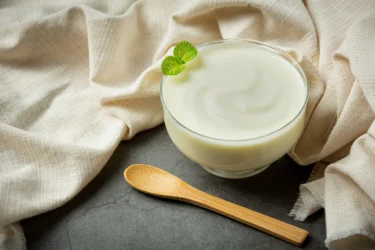
Packed with calcium, curd should be your go-to option for a healthy summer alternative to cold fizzy drinks. Rich with Vitamin B and gut-friendly bacteria, curd helps with digestion and soothes the body from within. Add flavour to it by mixing it with mangoes, strawberries and other fruits. It can also be had as Shrikhand.
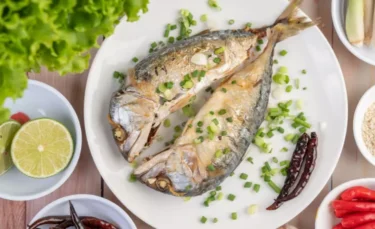
To boost the protein content in your diet without depending on meats, turn to fish. Rich in good fatty acids, fish makes for a tasty alternative, especially in summer. Since it generates less heat on consumption, you won’t feel lethargic and uncomfortably full, a feeling that usually we associate with after having chicken and meat dishes.
Also Read: Incredible Health Benefits Of Muskmelon
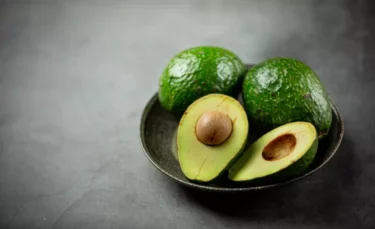
Avocado is a superfood in the true sense. The fruit is laden with a high amount of mono-saturated fatty acids which can help manage your cholesterol levels and support heart health while detoxifying the blood6. They are also easily digested, so your body will not need to create more heat to digest them. But if you have deranged lipid profile then do check with your healthcare practitioner to know the correct quantity for consumption.
I often recommend incorporating fruits and vegetables into your skincare routine to promote healthy skin. Avocado, in particular, has shown great potential in improving skin health. Its rich content of lutein and zeaxanthin, which are easily absorbed by the body, may help shield your skin from the harmful effects of UV rays11.
Dr. Ashok Pal, B.A.M.S
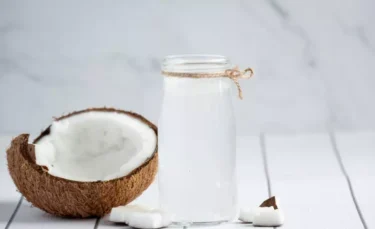
Coconut water is filled with electrolytes which help to keep you hydrated and cool. Rich in essential electrolytes, the power drink helps beat the heat during summer while keeping one hydrated and energetic throughout the day7. It can help keep you hydrated and boost your digestive capacity.
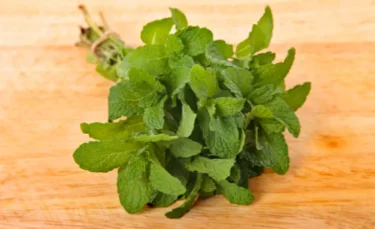
Mint is a herb that has cooling properties. One of the easiest herbs to find fresh in the market, both peppermint and spearmint are the best for consumption during summers. Mint helps in digestion without raising body heat. It also relieves nausea and headaches and eases depression and fatigue8. Making tea with mint leaves can help induce sweating to reduce body temperature. Mint combined with lime too makes a very refreshing drink for summer.
Also, you can add crushed mint leaves to water and have throughout the day. But make sure you allow the mint leaves to soak in the water for an hour before drinking it.
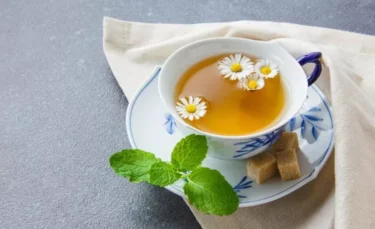
Chamomile tea is known for its antioxidant, soothing and anti-inflammatory properties. This herb can cool the body, ease insomnia, calm anxiety and soothe the digestive system9. It can be great for the skin and scalp as well, as it helps soothe inflammation, rashes, insect bites and even cuts and scrapes. It can help relax the muscles contributing to a soothing and cooling feel.
Remember, though most of these foods have been believed to be beneficial for cooling the body, further large-scale human trials can corroborate these findings.
Also Read: 13 Health Benefits of Watermelon and Recipes
Incorporating these 12 hydrating and nutrient-dense foods into your summer diet can help in keeping your body cool, maintaining electrolyte balance, and overall hydration. Rich in water content, essential vitamins, and antioxidants, these foods not only help lower core body temperature but also provide other health benefits. By making informed dietary choices, you can enhance your body’s resilience to heat and maintain optimal body function throughout the summer months. However, if you have any medical condition, its best to discuss with a health care professional before incorporating any new food item in your diet.
Also Read: 10 Health Benefits Of Black Coffee
Disclaimer: The information provided here is for educational/awareness purposes only and is not intended to be a substitute for medical treatment by a healthcare professional and should not be relied upon to diagnose or treat any medical condition. The reader should consult a registered medical practitioner to determine the appropriateness of the information and before consuming any medication. PharmEasy does not provide any guarantee or warranty (express or implied) regarding the accuracy, adequacy, completeness, legality, reliability or usefulness of the information; and disclaims any liability arising thereof.